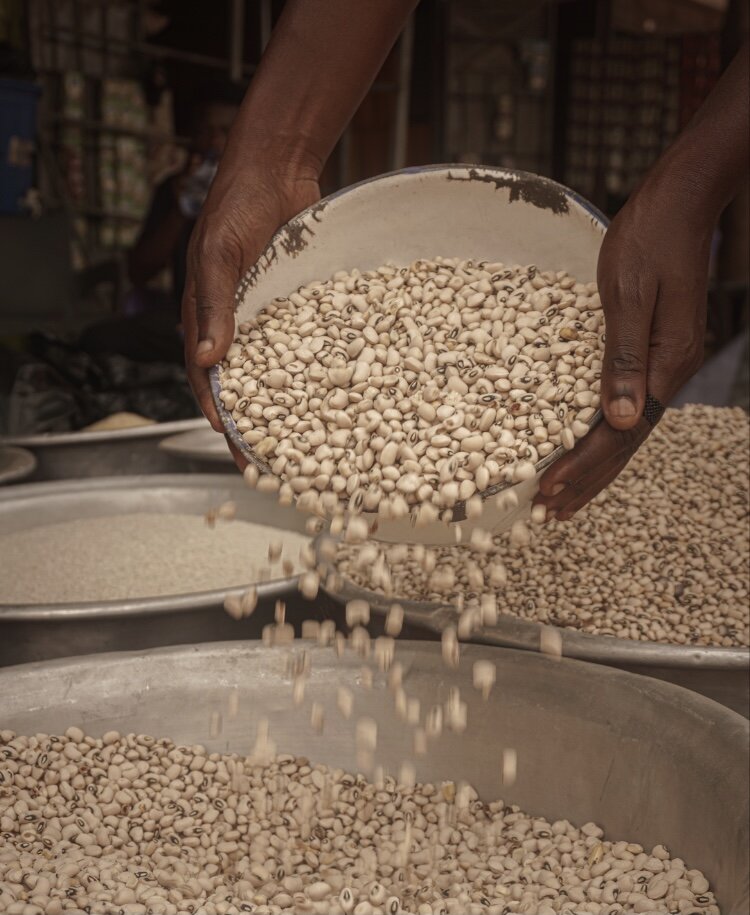The Seed is Our Past, Our Present, and Our Future
When you hold an indigenous seed in your hand, you are holding a living culture, tradition, heritage, history, plant knowledge, and the future of all living organisms.
Some 3,500 years ago in Mali, along the Niger River, the African indigenous rice, Oryza Glaberrima was domesticated. This African native rice made its way to North and South America through the transatlantic slave trade. Slave traders who bought the rice in West Africa served it as food on slave ships. Additionally, enslaved African women who hid some seeds in their hair planted varieties of native African foods in their homes.
In Suriname, the descendants from enslaved Africans who were able to escape slave plantations managed to establish their own community in the rainforests. They grew, harvested, and preserved the African indigenous rice, which is still a pivotal staple food in their communities today.
The women of Suriname have been collecting, conserving, and exchanging this rice variety.
In highlands of Guatemala, native seeds of corn, amaranth, and other indigenous crops are collected from neighboring families and kept in large earthenware cylinders.
Majority of seed savers are women.
Many of these women are subsistence farmers who feed their household first, sell what is left by the roadside or at the market, then save seeds for the following season. Preserving their native seeds is necessary to feeding their families, and ensuring that their children eat nutrient dense foods.
The seeds women save are better equipped for the local environment, adaptable to climate change, and necessary for food security. Overtime, women in Upper East region of Ghana have built up local knowledge of native seed varieties. For instance, in their communities, women know which baobab, shea, and dawadawa trees taste better, which ones to harvest from, and which ones not to.
In central Himalayas, in Gallakot village, a collective of women farmers have increased the cultivation of their traditional finger millet. This variety requires less water, less intensity, and less labour than wheat and rice.
Traditional seeds are a people’s cultural food. They are seeds that are able to grow in marginal conditions, in drought conditions, and in floods. In context to the environment native seeds thrive in, nature designed them to be resilient and to stand the test of time. This speaks to the holistic nature of cultural foods.
There is a maize in southern Zambia called Tandanzala which means, “chase away hunger,” and these are the foods that sustain hunger.
Seed saving systems vary from community to community, from culture to culture, and depends on place, space, and time. Seed saving systems are based on community and traditional values of selecting, exchanging, and sharing seeds. In some cultural context, women are in charge of food security crops such as groundnuts, shea nuts, vegetables, rice, and the mean are into the cash crops.
But what has not changed until now is that farmers have always fed their communities with their very own seed system. They grow it, they save it, they own it, they share it, they plant it. When farmers save seed, in a sense, they are securing the future of food.
Some communities have designated seed custodians, those directly responsible to save seed. For instance, those who save maize in Uganda are called Mawalampa.
Traditionally, food production in communities across the African continent has not been a monoculture. With a variety of native seeds, farmers in the Upper East region of Ghana could grow millet, then add groundnut and bambara beans as companion planting alongside the millet. This organic practice of farming increased the resilience and quality of the seed.
Local seed varieties have medicinal properties, the leaves, the roots, or even the stems of many foods can be boiled and consumed when someone in the community is sick, or bitten by an animal, and insect.
The local indigenous food do not contain any chemicals.
The Oryza Glaberimma that Suriname women are growing is becoming extinct on the African continent. There are fewer and fewer farmers growing it, and those that grow it, use it for home consumption. In many parts of Ghana, the variety of rice grown is the “agra”, the once farmers state has been given to them by the ministry of agriculture. And yet, the Afro-Suriname women have maintained a tradition that is dying out across the continent all through a rice seed.
I was told by a millet farmer, that if I roasted the late millet, I would be deformed, because in his culture, only particular traditionalist roast millet at funeral. In some cases, practices around certain seeds are a connection to physical and spiritual world. Seeds are not only for consumption, they are about identity. In some cultures, there are sowing rites around seeds, there are songs and prayers before the planting season.
I believe that the way of a people is in their seeds. The seed is the ultimate gift our ancestors gave us as our responsibility to mother earth.
If we give away our seeds to corporations, biotech companies, and governments that seek to genetically modify and engineer our indigenous seeds, we are not only selling away our past, our present, and our future but we are also destroying a library of intimate plant knowledge.


